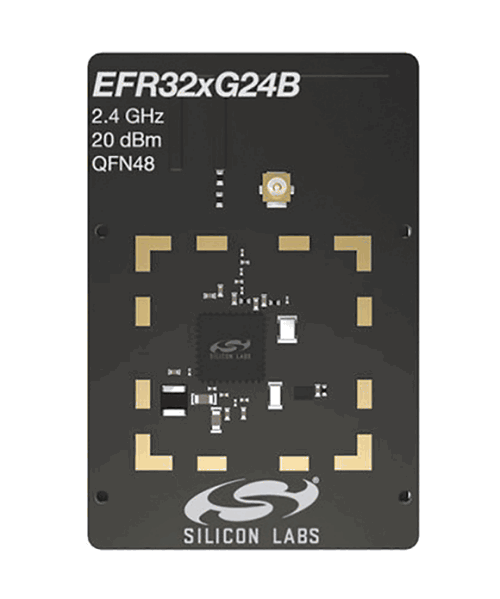
Brand new additions from Silicon Labs come in the form of the BG24 and MG24 families of 2,4 GHz wireless SoCs for Bluetooth and multiple-protocol operations, respectively, as well as a new software toolkit.
This new co-optimised hardware and software platform can be used to bring AI/ML (artificial intelligence/machine learning) applications and high-performance wireless to battery-powered edge devices.
Matter-ready, the ultra-low-power BG24 and MG24 families support multiple wireless protocols and incorporate PSA Level 3 Secure Vault protection, ideal for diverse smart home, medical and industrial applications.
The SoCs feature integrated AI/ML accelerators, support for Matter, Zigbee, OpenThread, Bluetooth Low Energy, Bluetooth mesh, proprietary and multi-protocol operation, the highest level of industry security certification, ultra-low power capabilities and the largest memory and Flash capacity in the Silicon Labs portfolio.
The supporting software toolkit is designed to allow developers to quickly build and deploy AI and ML algorithms using popular tool suites like TensorFlow.
Integrated AI/ML acceleration improves performance and energy efficiency
IoT product designers see the tremendous potential of AI and machine learning to bring even greater intelligence to edge applications like home security systems, wearable medical monitors, sensors monitoring commercial facilities and industrial equipment and more. But today, those considering deploying AI or machine learning at the edge are faced with steep penalties in performance and energy use that may outweigh the benefits.
The BG24 and MG24 alleviate those penalties with dedicated AI/ML accelerators built-in. This specialised hardware is designed to handle complex calculations quickly and efficiently, with internal testing showing up to a fourfold improvement in performance along with up to a sixfold improvement in energy efficiency. Because the ML calculations are happening on the local device rather than in the cloud, network latency is eliminated for faster decision-making and actions.

The new device families also have the largest Flash and random access memory (RAM) capacities in the Silicon Labs portfolio. This means that the device can evolve for multi-protocol support, Matter and trained ML algorithms for large datasets. PSA Level 3-certified Secure Vault, the highest level of security certification for IoT devices, provides the security needed in products like door locks, medical equipment and other sensitive deployments where hardening the device from external threats is paramount.
AI/ML software and Matter support
In addition to natively supporting TensorFlow, Silicon Labs has partnered with some of the leading AI and ML tool providers, like SensiML and Edge Impulse, to ensure that developers have an end-to-end toolchain that simplifies the development of machine learning models optimised for embedded deployments of wireless applications. Using this new AI/ML toolchain with Silicon Labs’ Simplicity Studio and the BG24 and MG24 families of SoCs, developers can create applications that draw information from various connected devices, all communicating with each other using Matter to then make intelligent machine learning-driven decisions.
For example, in a commercial office building, many lights are controlled by motion detectors that monitor occupancy to determine if the lights should be on or off. However, when typing at a desk with motion limited to hands and fingers, workers may be left in the dark when motion sensors alone cannot recognise their presence. By connecting audio sensors with motion detectors through the Matter application layer, the additional audio data, such as the sound of typing, can be run through a machine-learning algorithm to allow the lighting system to make a more informed decision about whether the lights should be on or off.
ML computing at the edge enables other intelligent industrial and home applications, including sensor-data processing for anomaly detection, predictive maintenance, audio pattern recognition for improved glass-break detection, simple-command word recognition and vision use-cases like presence detection or people counting with low-resolution cameras.
Silicon Labs’ most capable family of SoCs
The single-die BG24 and MG24 SoCs combine a 78 MHz ARM Cortex-M33 processor, high-performance 2,4 GHz radio, 20-bit ADC, an optimised combination of Flash
| Tel: | +27 11 608 0144 |
| Email: | [email protected] |
| www: | www.nuvisionelec.com |
| Articles: | More information and articles about NuVision Electronics |

© Technews Publishing (Pty) Ltd | All Rights Reserved